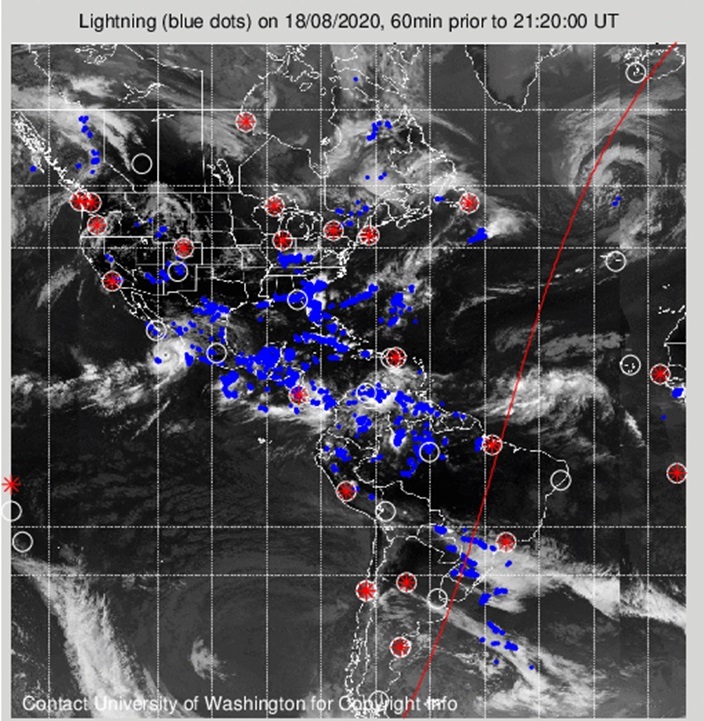Project Lead: Wei-Yi Cheng, Department of Atmospheric Sciences
eScience Liaison: Scott Henderson
Dry thunderstorms (DT) are convective storms that generate lightning flashes without significant rainfall at the ground. The frequent occurrence of DTs has long been an important safety concern in the western United States due to its connection to wildfire events. An accurate forecast for the dry thunderstorms is therefore critically important, but remains a difficult task because the corresponding physical mechanisms are not yet fully understood. In addition, traditional lightning parameterizations methods are often based on simplified physical intuition and are limited by a small number of free parameters. Machine learning (ML) techniques enable a more ambitious approach to develop parameterizations using data-driven approach and are therefore more flexible than traditional lightning parameterizations. By utilizing the recently developed lightning observations dataset from World-Wide Lightning Location Network (WWLLN) and various atmospheric observations/reanalysis products from ERA5 and TRMM, this study aims to improve the dry thunderstorms forecast skill in the western United States. Several ML methods are tested, including the random forest model and neural network model, where the models are applied to predictions of both binary classification of the occurrence of thunderstorms and the total lightning stroke. By using 10 years of data, our results show that, even with the same input variables, the ML-based lightning parameterization methods are able to outperform an empirical lightning parameterization method in terms of capturing the spatial/temporal variability of both normal and dry lightning.

